Galapagos (April, 2013)

The true equator as established by the ancients and modern GPS. The tourist park is in the wrong spot as established by the Europeans.

Many Ecuadorian villages are directly under active volcanoes. If they erupt, the villagers flee and establish themselves elsewhere.

Quito, Ecuador’s capital

Welcome to Galapagos! Plane landed on Bartholamew and then a shuttle boat to Santa Cruz.

Highland areas receive plenty of rain and are very lush.

Farmers leave areas of acreage natural for tortoises to graze. Santa Cruz is the only truly habitated island.

The islands are all volcanic. Lava tunnels carve out interesting sites.
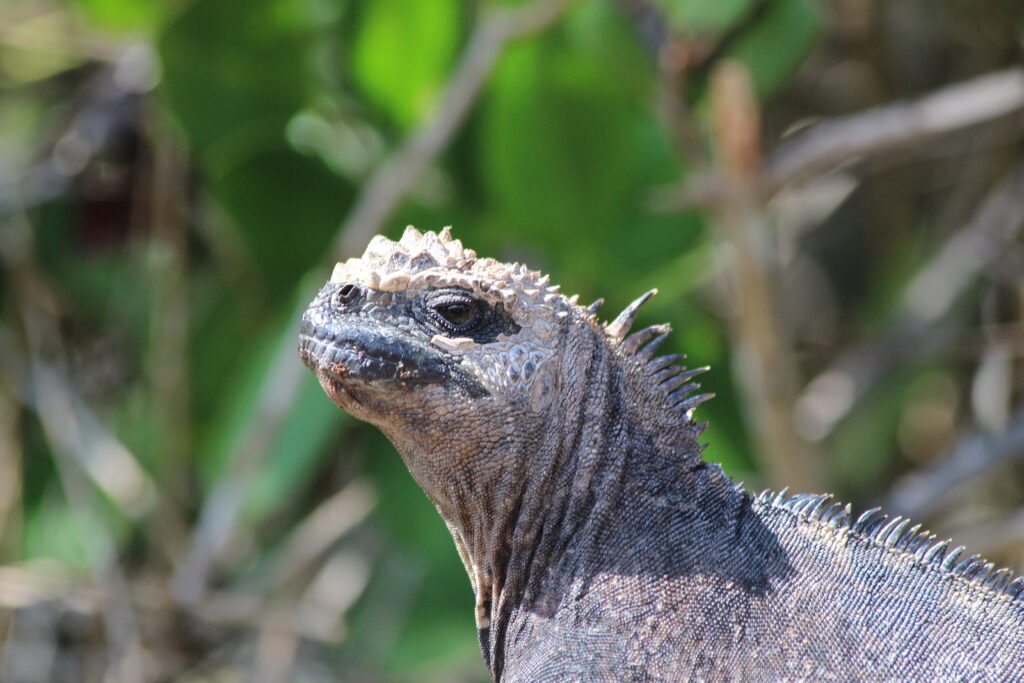
Iguanas vary in color depending on where in the islands they live.

Islands are inhabited by birds, reptiles, and sea lions. This is a small warbler.

Sink hole within a lava tunnel

Blue footed boobies in mating season

He’s showing off.

She is ready.

The proud couple

A salt bush can absorb salt water, egest the salt, and use the water.

Snorkeling with sea lions

Post Office Bay, Floreana – leave an addressed postcard and someone going that way will deliver it, just like the whalers of old.

Official welcome to Floreana

Find the tortoise

Natural tunnel or slot canyon

Highlands are very lush.

Mrs. Wittmer’s tortoise, the only one you were allowed to touch, supposedly met Darwin.

Our guide giving the tortoise a passion fruit treat

Streetlights were installed for the one hotel and rutted road.

Our boat, the Integrity, at sunset

Majestic pelicans welcome us to Isabella.

Sally Lightfoot crabs provide a spark of color against the lava.

Lava flow formations are formed by quick cooling after eruptions.

Lava cactus are only several inches tall.

This cactus is in bloom; area is considered a desert because of lack of rain, though it has no sand.

Lowlands gather the rain in pools and provide habitat for flamingos.
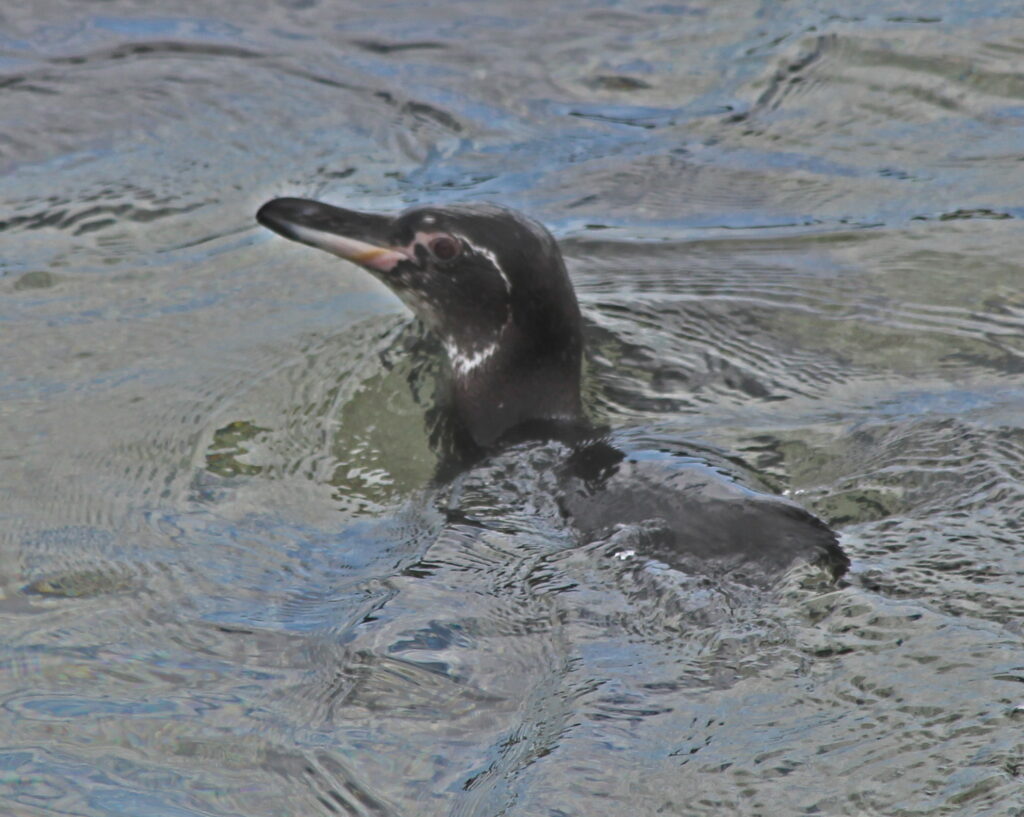
Galapagos penguins are the northernmost penguins.
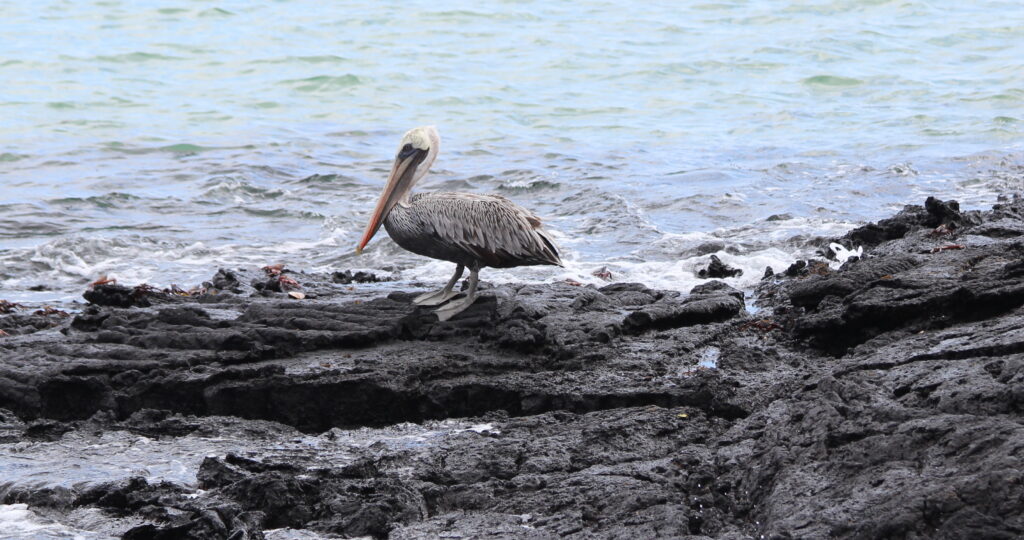

Flightless cormorant – without predators being streamlined for swimming with almost no wings is more advantageous than flying.

Sea turtles swim right below you while you snorkel. No fears of humans.

Blue footed booby

Great blue heron in a mangrove lagoon

A mangrove finch is one of Darwin’s finches of the Galapagos.

A school of golden rays patrol the lagoon.
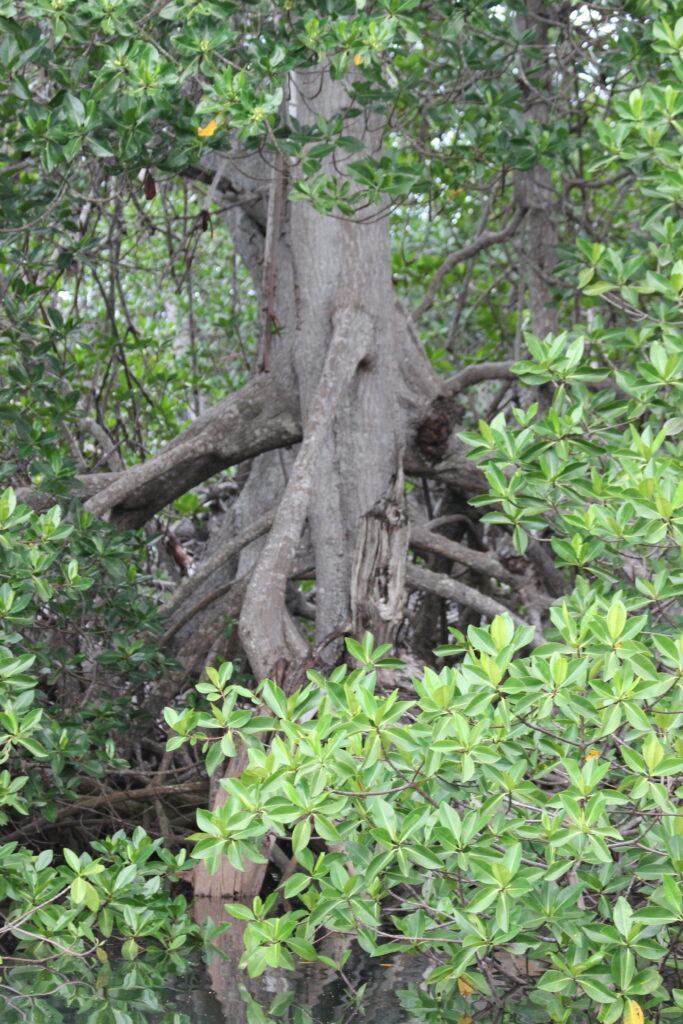
Mangroves grow very slowly, are very ancient, and are able to tolerate salt water.

Penguins also frequent the lagoon.

Another adventurous day comes to an end.

This sea turtle was on the beach on Isabella laying eggs in the middle of the day. Our guide said she wouldn’t make it as it was too hot for her to survive. At the end of our hike, the whole beach cheered as we watched slide back into the ocean!

This tortuga, taking a walk in the middle of the path, held us up for nearly half an hour as we are not allowed to get too close and didn’t have room to walk around!

One of the few predators on the islands, a Galapagos hawk

An iguana of the highlands is colored to blend into highland vegetation.

Snorkeling of Isabella

Alga covered rocks underwater in Urbina Bay, Isabella provide a grazing area for marine iguanas.

Marine iguanas are powerful surface swimmers as well as underwater feeders.

Sea turtles also graze underwater.

Snorkeling with penguins is a unique experience.

Beware of the greeting at Punta Espinoza, Fernandino

Lava fields and small caldrons of Fernandino

Marine iguanas blend into the lava.

There by the hundreds, (thousands?), all atop of each other.

Young

And old
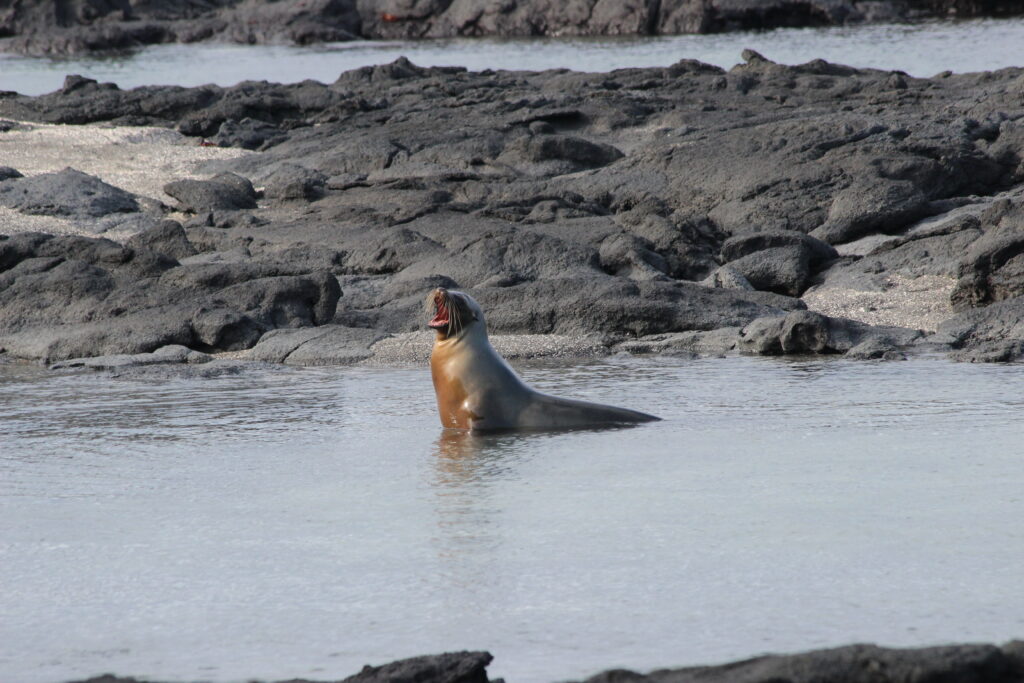
Bull protecting his harem

In need of protection

Bright colors of the ruddy turnstone

Galapagos penguins are the only ones to have a colony north of the equator.

Beautiful end to another amazing day

Tagus Cove, Isabella

Distinct line between lava fields and lush highlands

Rugged shoreline of the islands

Volcano cones abound.

Supposedly a green flash can be seen as the sun disappears at the equator; we never saw it.

Rock arches on the island of Santiago

Sally Lightfoot crabs mix with marine iguanas in breaking waves.
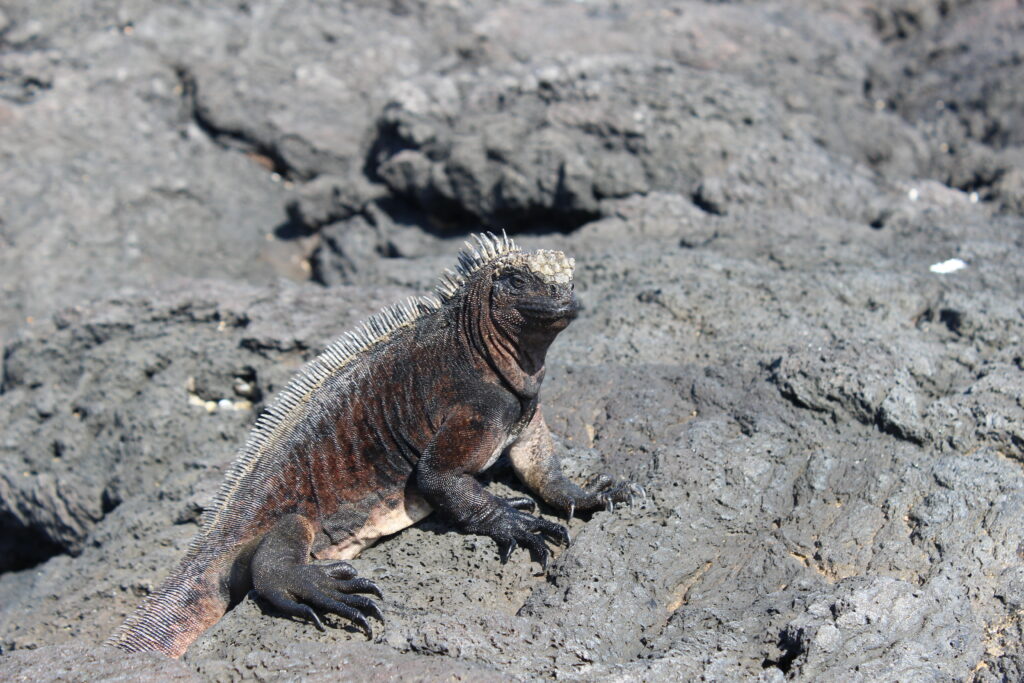
A youg marine iguana

Lava cones form by spewing lava cooling and hardening around the opening.

A rainbow is the reward for the one rainy day of the trip.

The striations are evident from seismic uplift.

Monk rock – look for the formation.

Welcome to North Seymour
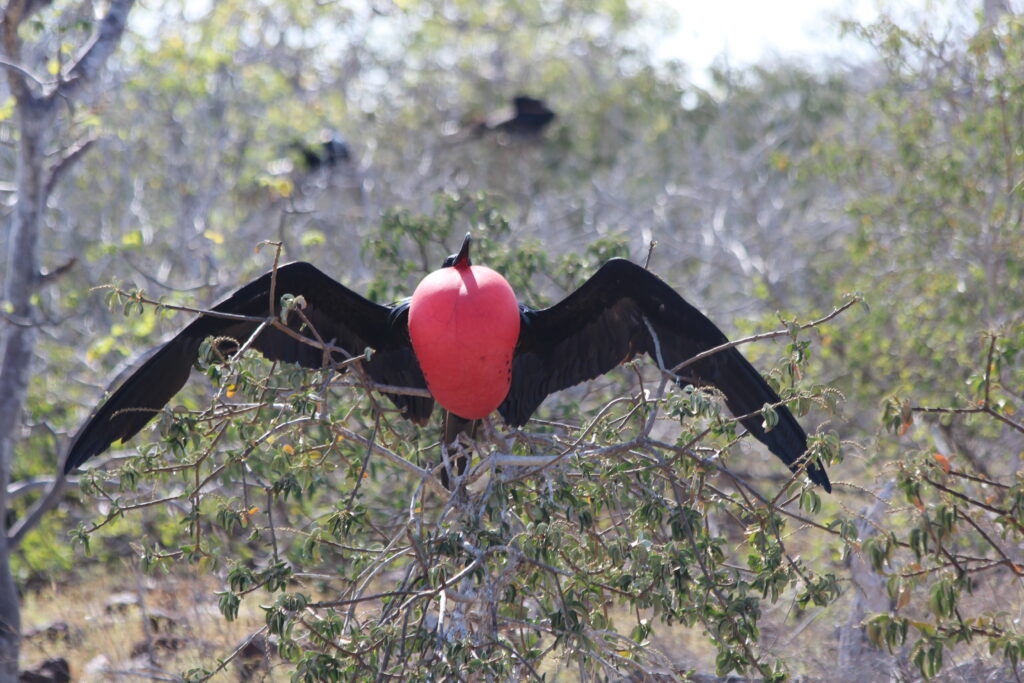
Male frigates puff up and build nests to impress the females.

Who would you choose?

A lucky female has her choice.

A fledgling frigate

Mother and hungry baby

Baby takes food from its mother’s gullet.

Galapagos gull

Another coloring for the iguanas

A small green heron

Blue footed booby

Blue footed boobies do not build nests; they stand on the egg to incubate it.

A flamingo gives me a parting pose; good bye to the Galapagos.